Along the S-shaped land, the seanot only offers people abundant fish and shrimp but also quietly leaves behind pure white salt grains. Those tiny “pearls” are distilled from the sun and wind, and from the sweat and effort of generations of salt workers.
Follow MLifeOn to Phuong Cuu salt fields to witness the last harvest of the season and feel the hardship embedded in every grain of salt.
Harsh climate creates favorable conditions for salt making
Located in the central region, Khanh Hoa (formerly part of Ninh Thuan) has a scorching hot climate all year round. The harsh weather, seemingly difficult for living, turns out to be an ideal condition for salt making. The soil foundation has good permeability, the seawater salinity is stable, and the long dry season creates the chance for shimmering silver salt fields to appear.
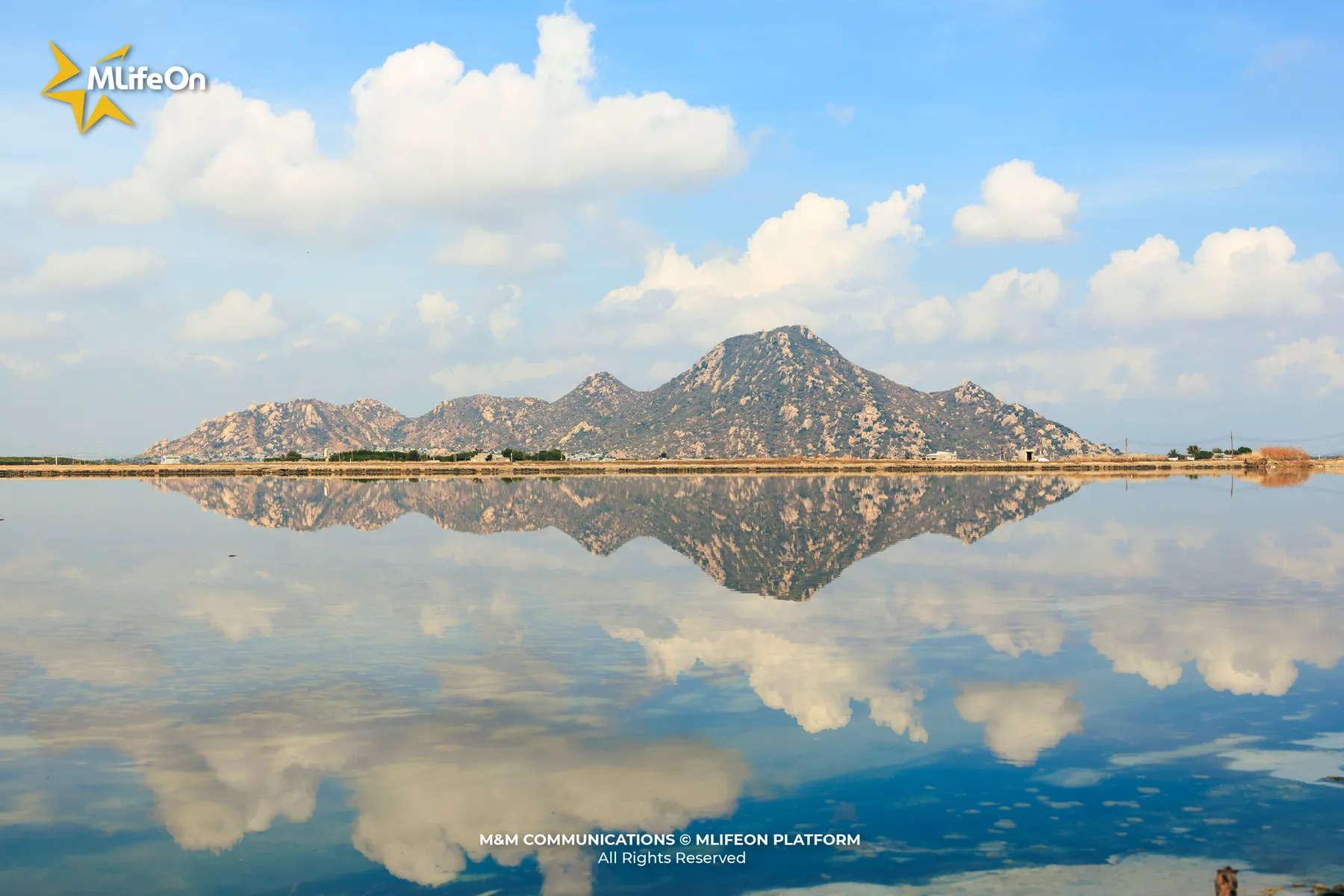
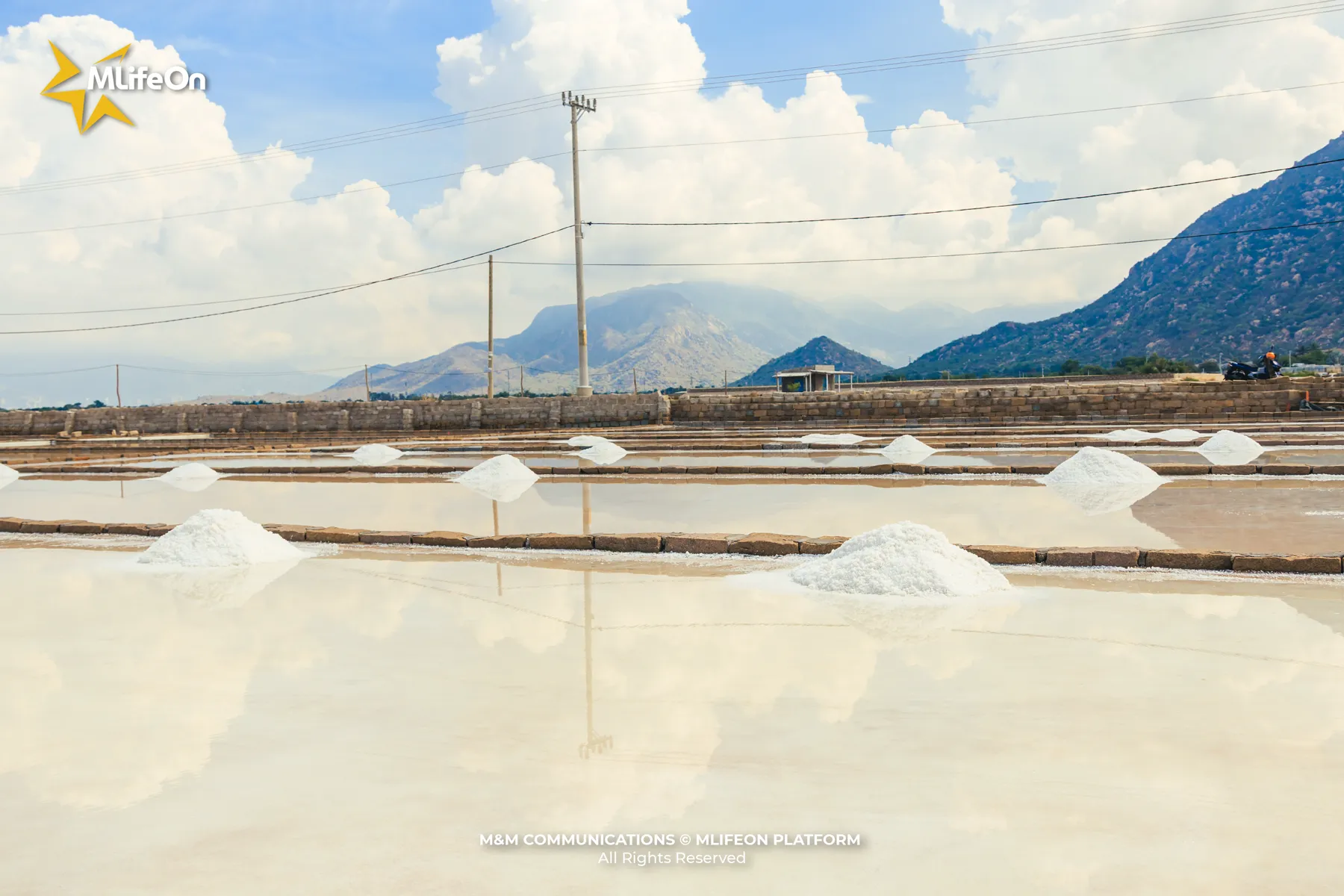
The sun pours fire onto the salt fields, and the salty wind burns the skin, making passersby hesitant. Yet for salt workers, it is a gift from nature. Thanks to this harsh sun and wind, seawater quickly evaporates, leaving behind pure white salt grains that are firm and crisp. That is why salt is considered pure and precious, crystallized from both the generosity and the severity of the coastal land.
The process of crystallizing white salt grains
Standing in the middle of the salt fields, I realized how much effort goes into a tiny grain of salt. Seawater is guided into the fields and left to dry under the blazing sun. The brine gradually shrinks and evaporates, revealing layers of pure salt crystals shimmering like crystal under the sunlight.
When the salt is “ripe,” sunburned hands swiftly move the wooden rakes. The scraping sound of salt echoes under the scorching heat, blending with the heavy breaths of the salt workers. The salt is then gathered into bright white mounds, lined up like small peaks across the clear fields.
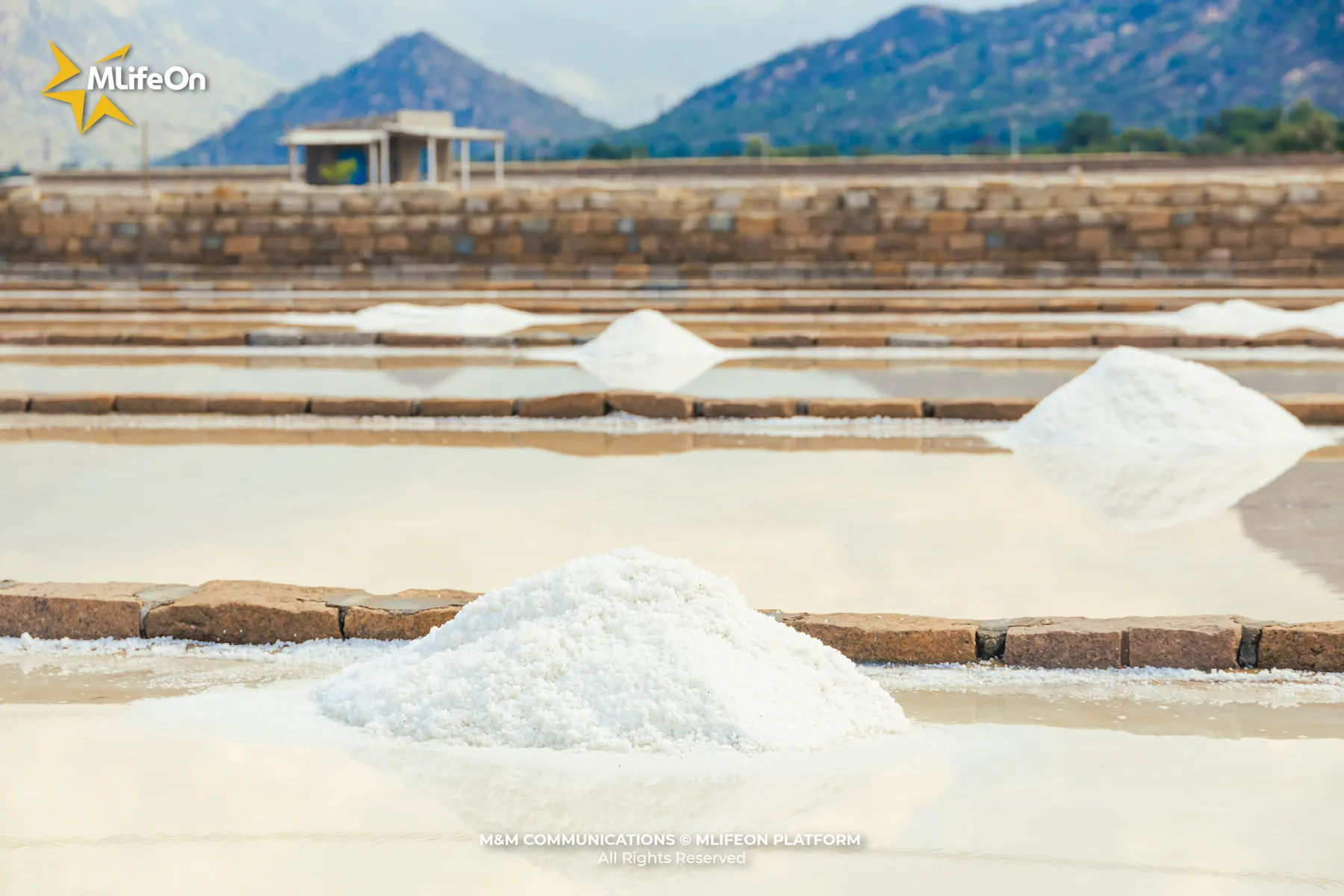
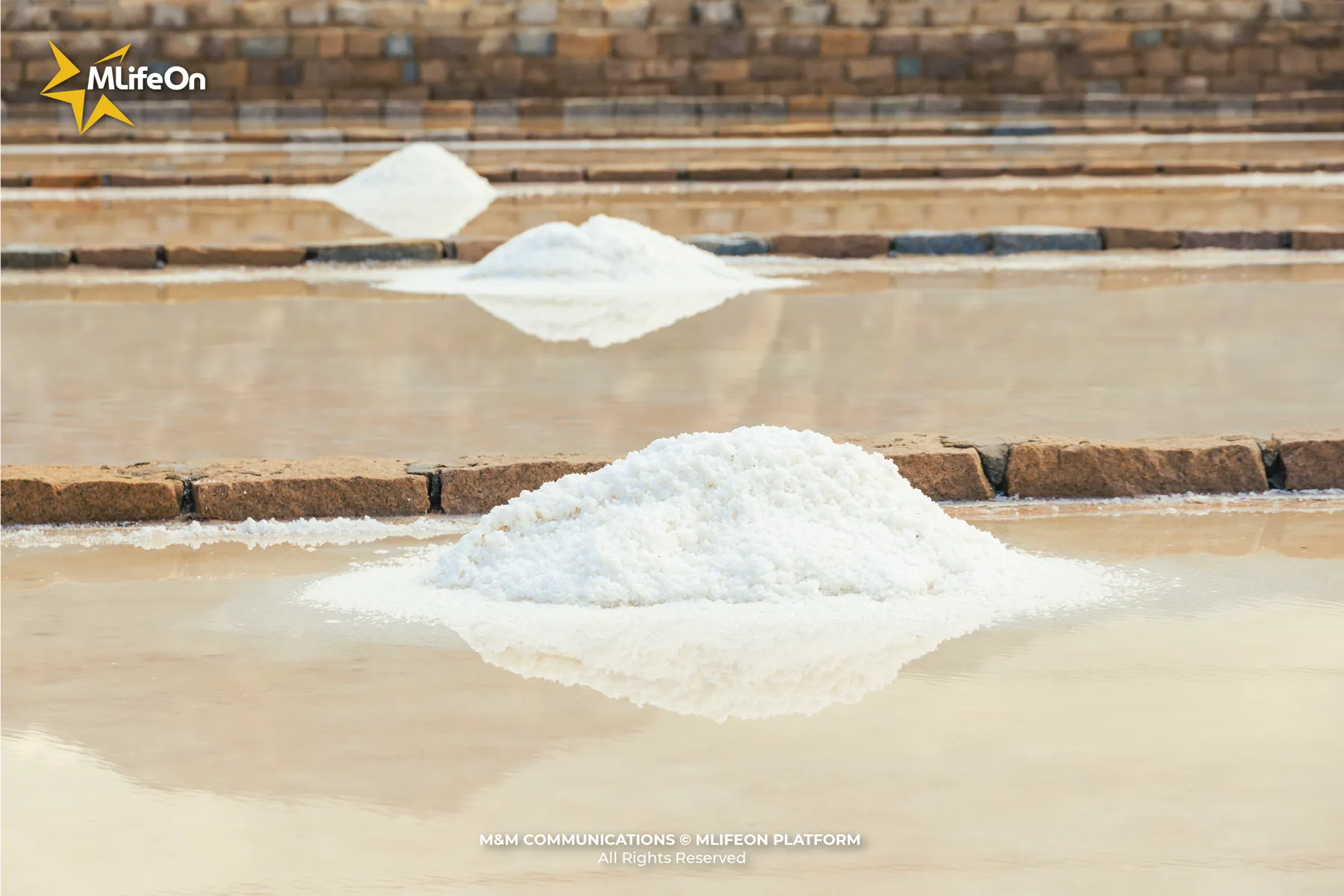
They call them “salty pearls,” crystallized from the sun, the wind, and the drops of sweat running down sunburned backs.
The life of salt workers bends under the sun, arms carrying white salt grains.
“Chị tôi đội nắng trên đầu
Lưng cong gánh muối trắng phau giữa trời
Mồ hôi từng giọt rơi rơi
Bán mặt cho muối, xót đời diêm dân”
(Excerpt from “Beloved Salt Grains” by Nam Phuong Nguyen Thi)
On the salty fields, their burning feet still take patient steps, and their calloused hands grip the wooden rake firmly. Thin backs stoop low, carrying the weight of a long, scorching season. Though salt making is laborious and the income barely enough, they hold on to it, because it is not only a livelihood but also a way to keep the lifeblood of their homeland.
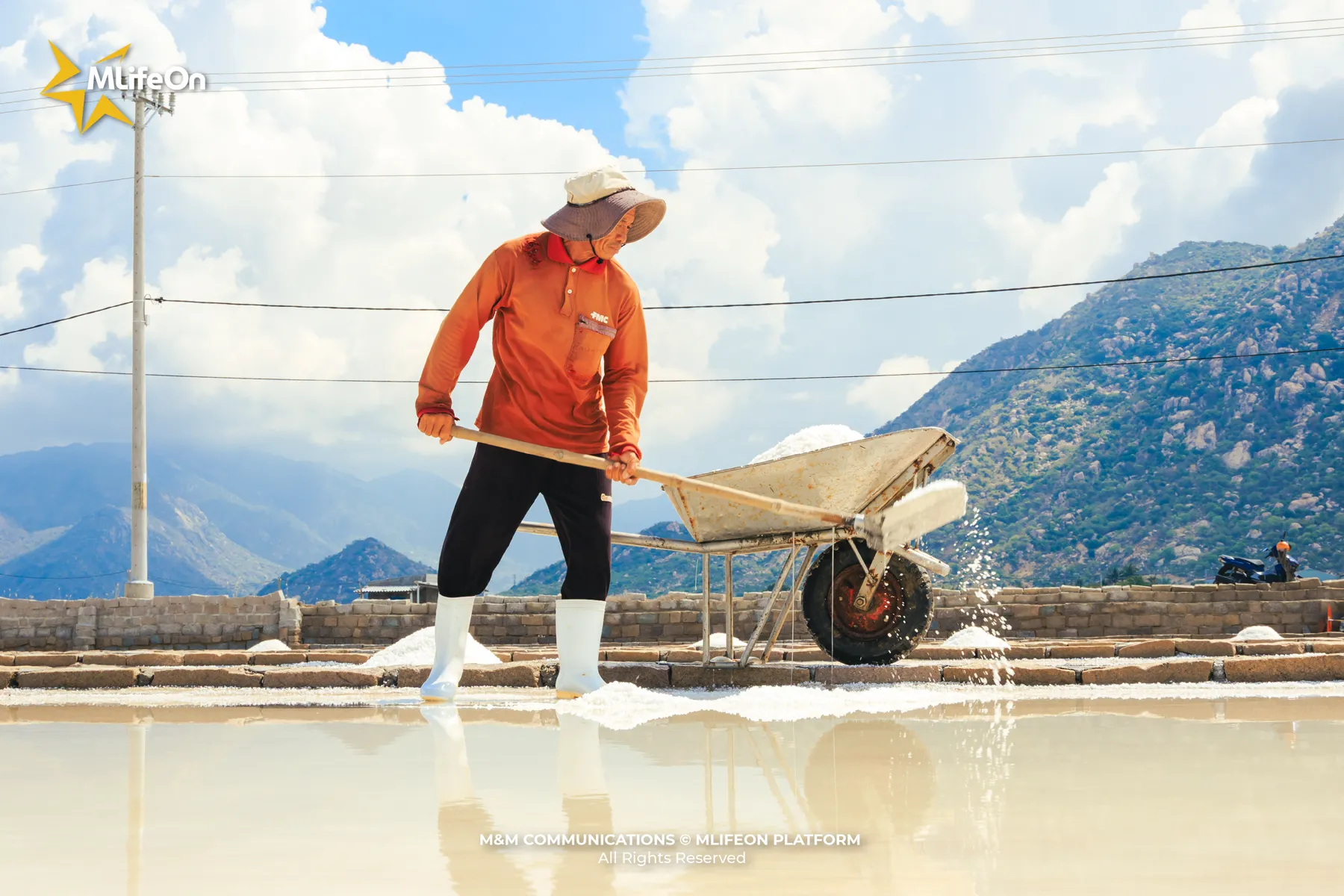
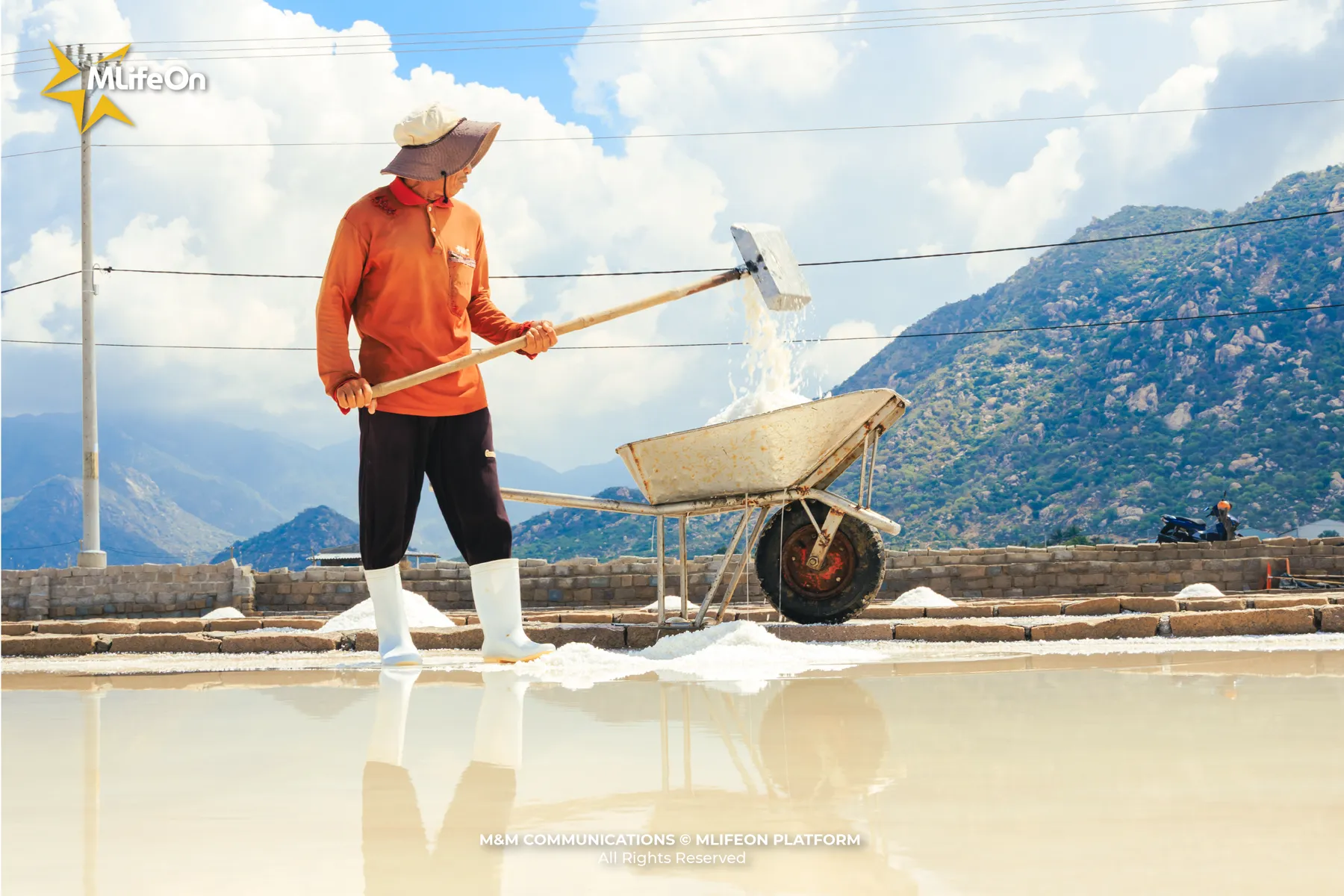
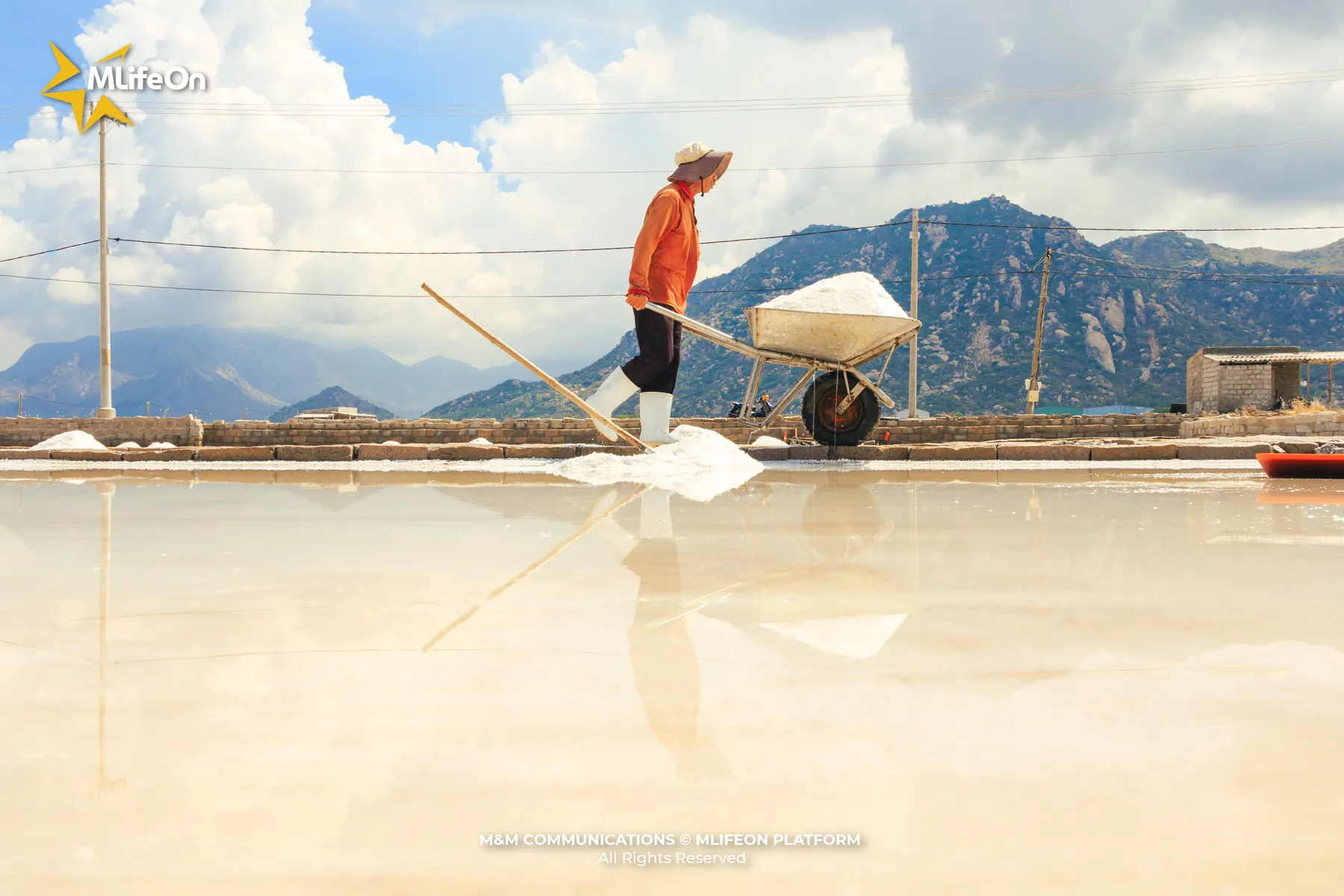
Seeing the trembling hands lifting the baskets of pure white salt, I suddenly realized that the salt on today’s dining table is not only salty from the sea, but also from the patience and the hard lives of generations of salt workers.
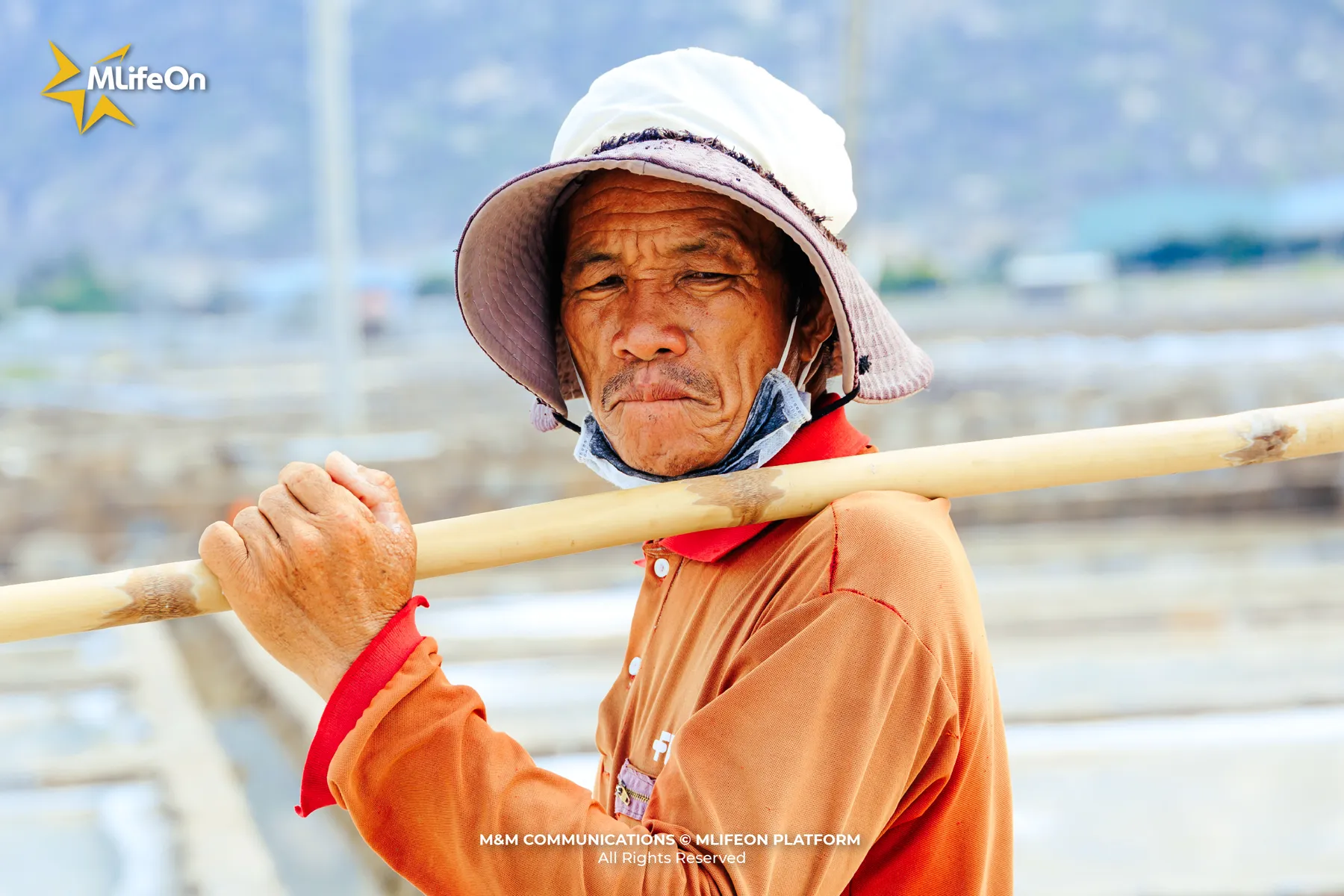
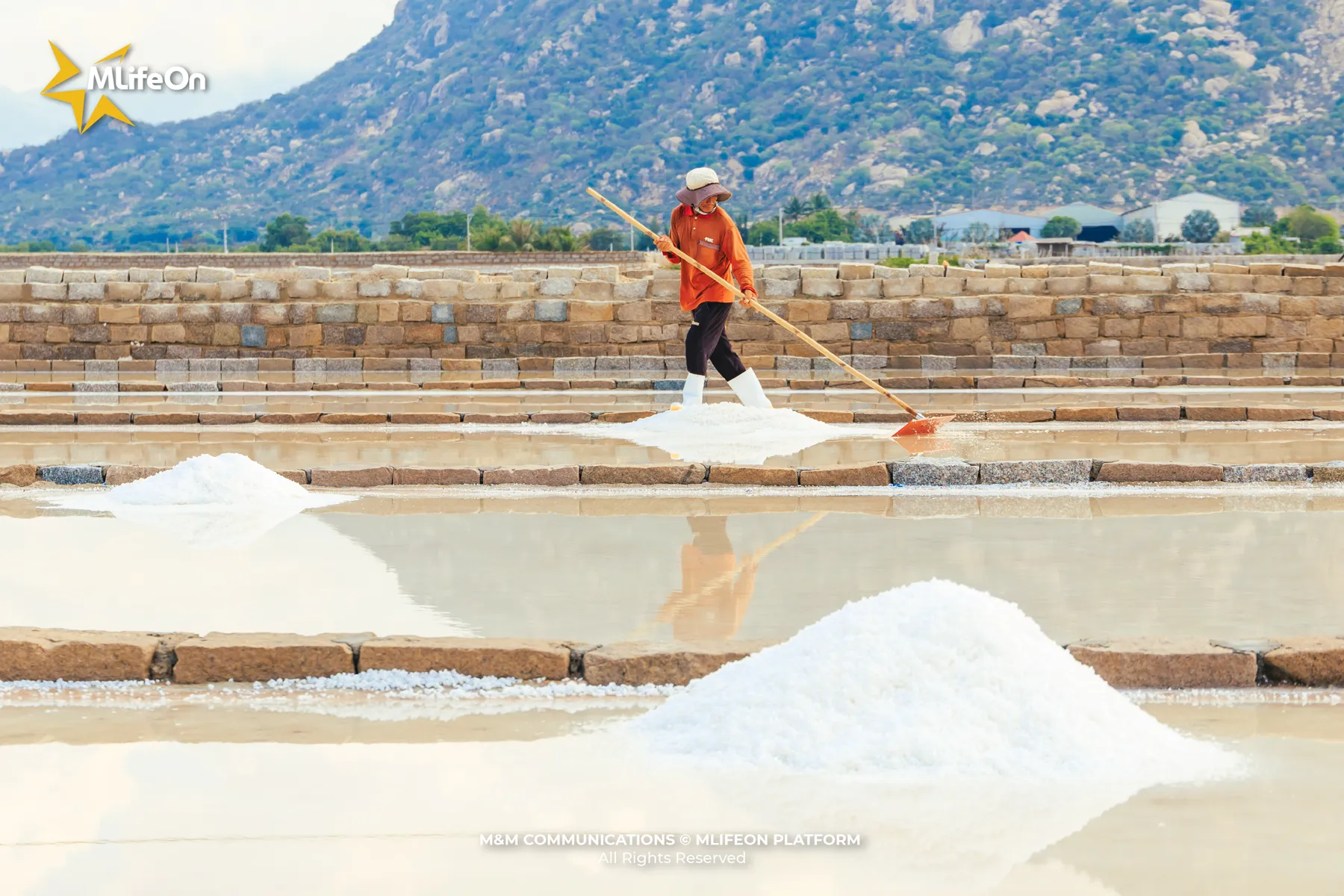
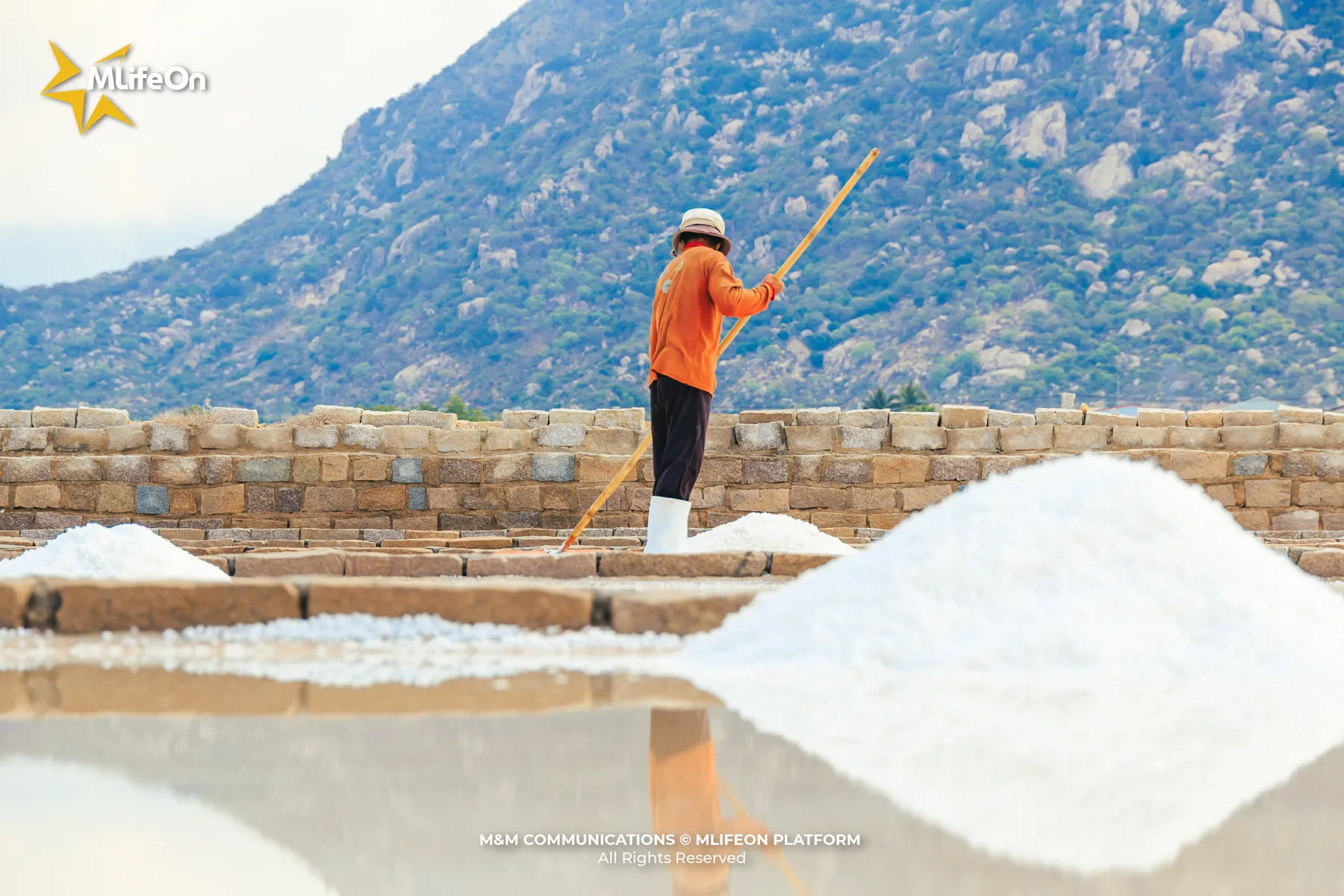
The last days of the season at Phuong Cuu salt fields
In September, I had the chance to return to Phuong Cuu during the final days of the salt harvest. The fields were quiet, with only a few bent backs diligently gathering the last mounds of salt. The sun blazed harshly, the white salt dazzled the eyes, and the wind carried a sting of saltiness against the skin. Yet the people here continued their work in silence, as if this labor had been bound to them for a lifetime.
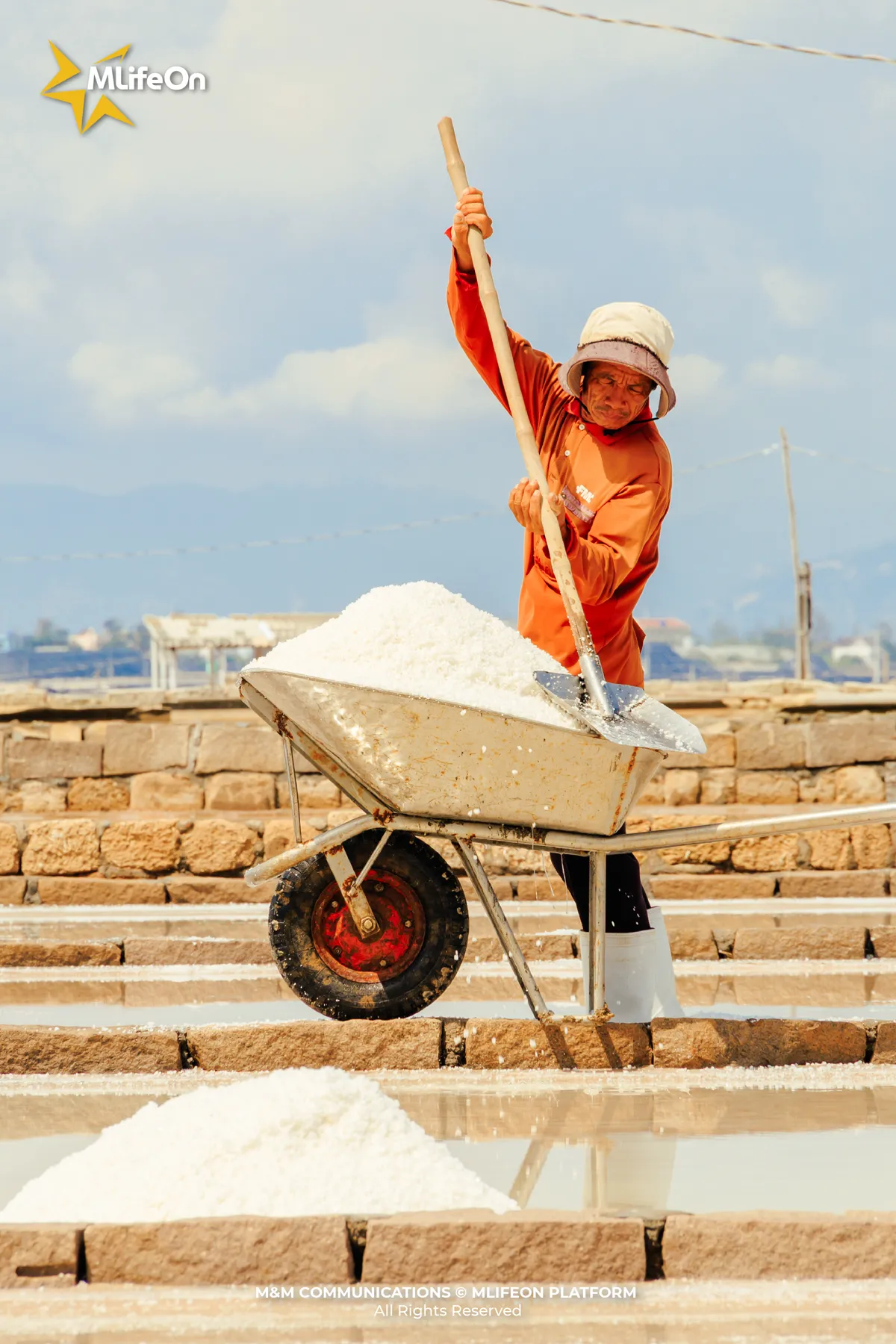
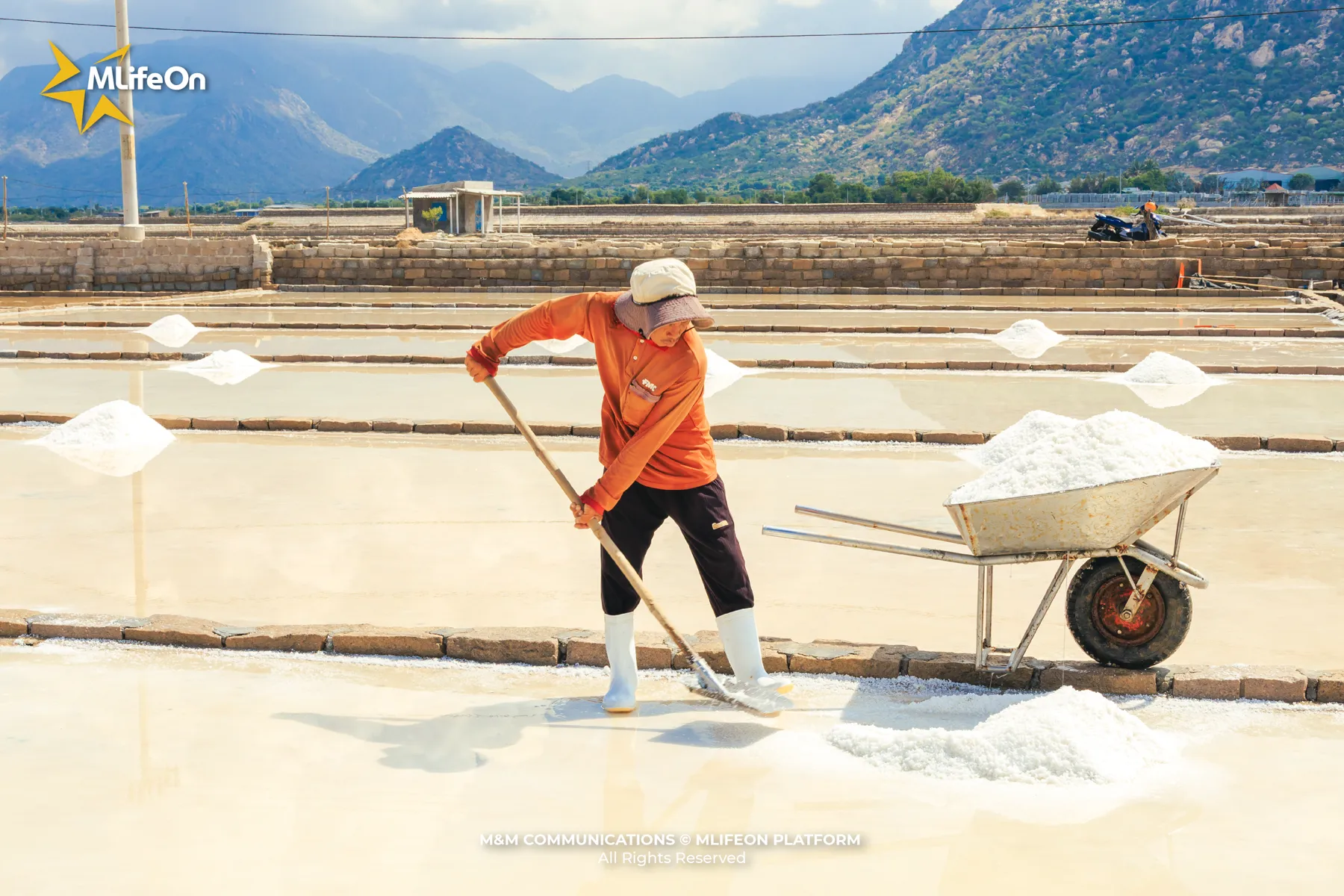
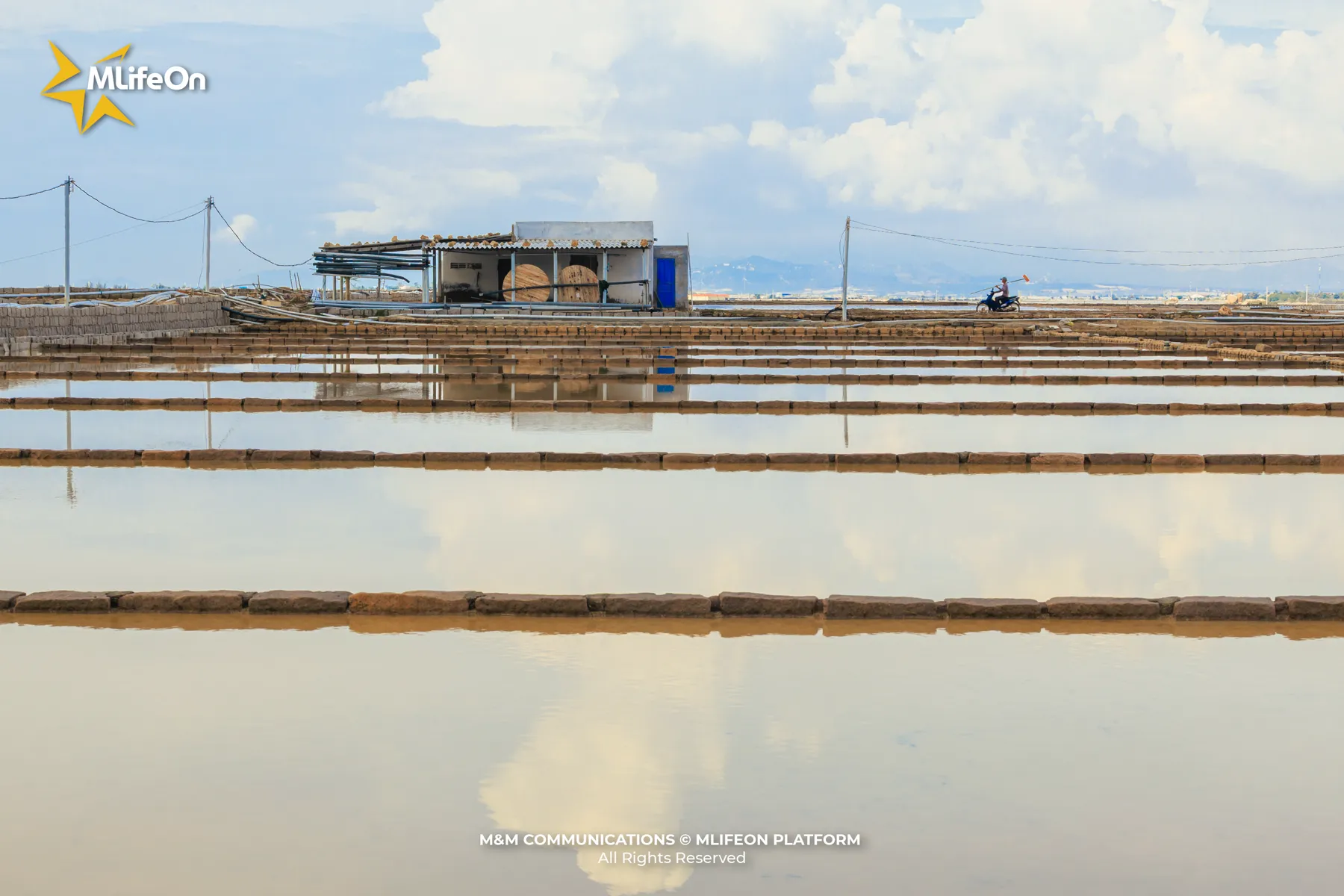
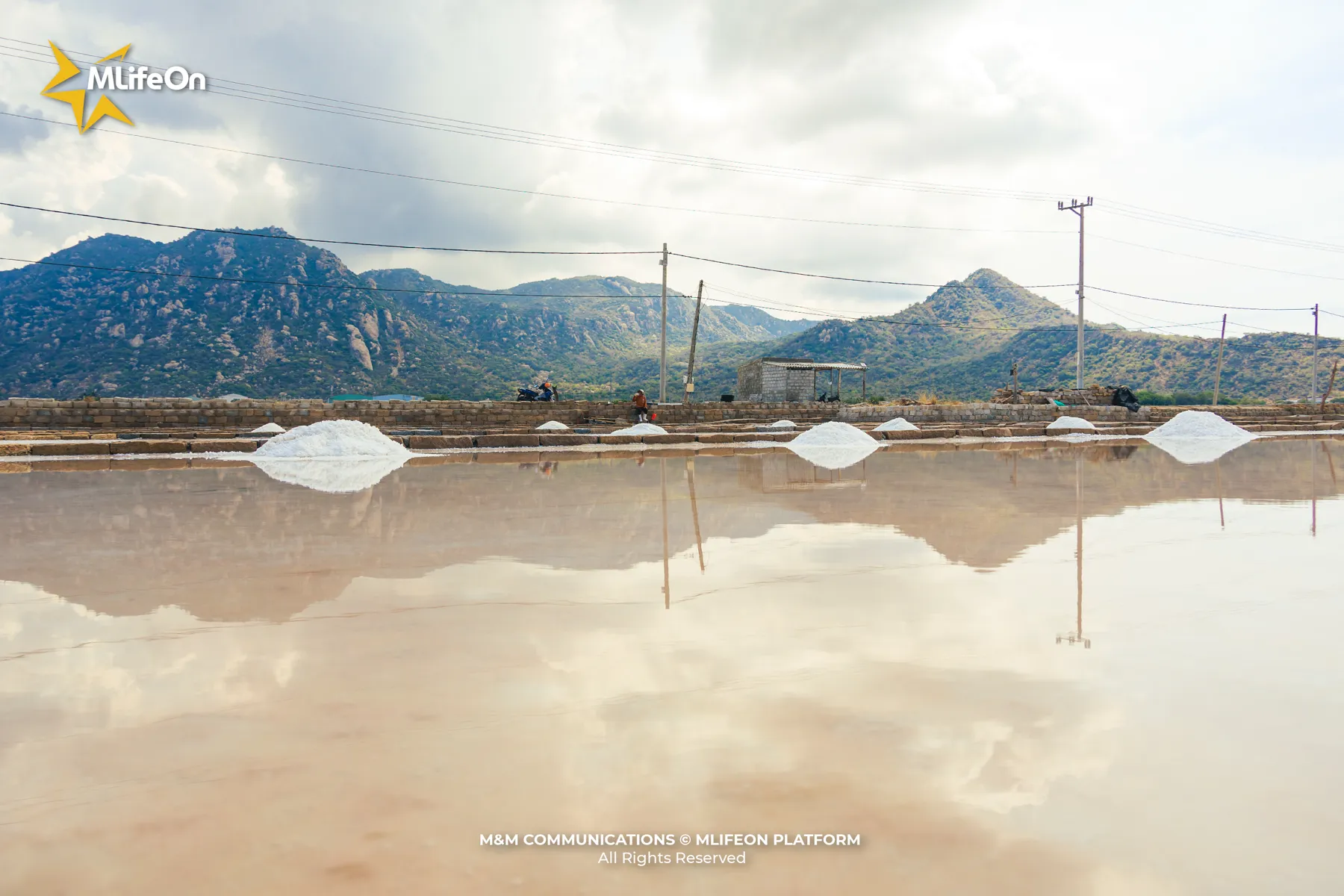
Each step on the dry salt field bears the mark of endurance and patience. When the season ends, they wait for the next sunshine to begin again. Salt making stays bound to their lives, passed down from father to son, repeating year after year, becoming an inseparable part of survival by the salty sea.
Conclusion
Today, many salt fields along the Khanh Hoa coast have found a new direction by developing experiential tourism. Visitors can try raking the salt, carrying it on their shoulders, and listening to the life stories of salt workers. This model not only helps preserve the traditional craft but also creates new livelihoods for the community, so that salt making is tied not only to hardship but also to cultural pride.
Standing in the middle of Phuong Cuu salt fields at the close of the season, I realized that salt is not simply a seasoning on the table. It is the crystallization of sun and wind, of bitter sweat, and of a lifetime of patience. The craft of salt making is arduous and humble, yet it is as beautiful and enduring as the people who cling to the sea.
—---
CREDIT:
- Photography: Kien Trang
- Content: Vy Vy
- Design: Trung Huynh





















